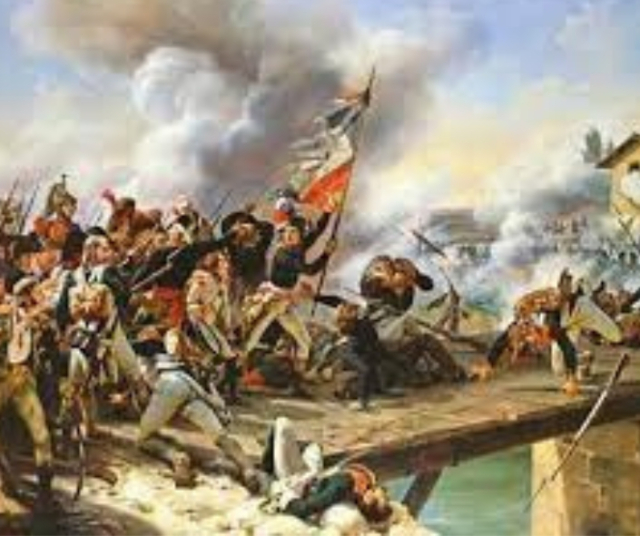The Spanish War of Independence, also known as the Peninsular War, is one of the most significant events in the history of Spain and Europe in the 19th century. This conflict, which lasted from 1808 to 1814, arose in response to the invasion of Spain by Napoleonic forces. However, what began as a military occupation became a long and bloody struggle for independence, which left a lasting legacy on Spanish national identity and European history.
Historic context
To fully understand the Spanish War of Independence, it is essential to take into account the historical context in which it developed. At the beginning of the 19th century, Europe was immersed in the upheavals of the French Revolution and the Napoleonic Wars. Napoleon Bonaparte, the emperor of France, sought to expand his rule over the continent, imposing his will on neighboring nations. In 1808, Spain was under Napoleon's domination, thanks to the abdication of Spanish King Charles IV and his subsequent replacement by his son, Joseph Bonaparte, named by his brother Napoleon as Joseph I of Spain.
The presence of Joseph Bonaparte on the Spanish throne caused great indignation among the Spanish population. Although the French invasion was initially seen as a liberation from the corrupt regime of Charles IV, it soon became an unpopular occupation. The spark that ignited the Spanish resistance was the popular uprising of May 2, 1808 in Madrid, known as the Dos de Mayo Uprising, where the people of Madrid rebelled against the French troops.
Conflict Development
The Second of May Uprising marked the beginning of the Spanish War of Independence. Although the initial resistance was mostly spontaneous and disorganized, it soon grew into a coordinated national movement. The Supreme Juntas, governing bodies that emerged from the resistance, played a crucial role in organizing the fight against the French.
One of the most notable aspects of the War of Independence was the guerrilla warfare tactics employed by the Spanish. This strategy, characterized by rapid and surprise attacks, inflicted significant losses on the French forces and made their advance through Spanish territory difficult. The guerrillas, known as the "Spanish guerrillas", became a formidable force, led by figures such as Francisco Espoz y Mina, Juan Martín Díez "El Empecinado", and the legendary José María de la Cueva, known as "El Marques de the Roman".
The Participation of Other Actors
The Spanish War of Independence also attracted the participation of other international actors. The United Kingdom, Napoleon's enemy, saw in the Spanish resistance an opportunity to weaken French influence in Europe. In 1808, British troops landed on the Iberian Peninsula, led by General Arthur Wellesley, later known as the Duke of Wellington. The British presence was fundamental to the course of the war, especially in the battles of Talavera, Buçaco and, above all, in the decisive battle of Waterloo in 1815.
In addition to British support, the War of Independence also had the backing of Portugal. Although Portugal had been invaded by French troops in 1807, it managed to maintain its independence and provided an important refuge for Spaniards fleeing Napoleonic occupation.
Battles and Aftermath
The Spanish War of Independence was a conflict marked by numerous battles that determined its course and outcome. These battles not only represented armed confrontations, but also turning points that influenced the development and final outcome of the conflict.
One of the most significant battles was the Battle of Bailén in 1808. In this confrontation, the Spanish forces, under the command of General Castaños, managed to inflict a decisive defeat on the French armies. This victory not only demonstrated the resilience of the Spanish people against the Napoleonic occupation, but also inspired new patriotic fervor and strengthened the morale of the Spanish forces.
Another crucial moment occurred in the Battle of Albuera in 1811. This battle, which took place on Spanish soil, was a fierce confrontation between French troops and a coalition made up of the Spanish, British and Portuguese. Despite the high losses suffered by both sides, the coalition managed to maintain its position, preventing a significant advance by French forces in the region.
However, it was the battle of Vitoria in 1813 that marked a definitive turning point in the War of Independence. In this battle, the Allied forces, led by the Duke of Wellington, inflicted a crushing defeat on the French armies, forcing them to withdraw from Spain. The victory at Vitoria not only meant the end of the French occupation of Spanish soil, but also paved the way for the restoration of Ferdinand VII to the Spanish throne.
The consequences of the Spanish War of Independence were profound and lasting. In addition to the human and material losses suffered during the conflict, the war left Spain economically devastated and politically divided. However, it also laid the foundation for the rise of Spanish nationalism and liberalism in the country.
Furthermore, British participation in the war and the guerrilla warfare tactics employed by the Spanish influenced the development of modern warfare. Cooperation between the Allied powers and the Spanish resistance demonstrated the importance of coalition work in warfare, while the tactics of guerrilla warfare inspired later military strategies in conflicts around the world.
The Spanish War of Independence is considered a milestone in the history of Spain and Europe. It not only marked the beginning of the decline of Napoleonic power, but also consolidated Spanish national identity and laid the foundation for the rise of liberalism in Spain. The Spanish resistance against the French occupation became a symbol of the fight for freedom and independence throughout Europe.
Furthermore, the Spanish War of Independence had a lasting impact on the development of modern warfare. The guerrilla warfare tactics employed by the Spanish influenced later military strategies, and British participation in the conflict demonstrated the importance of coalition work in warfare.
